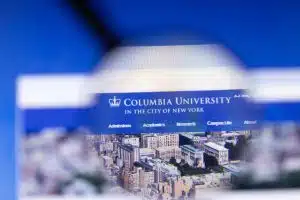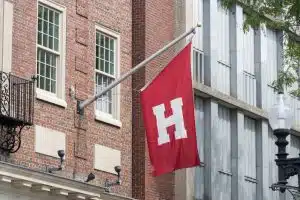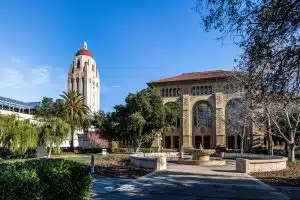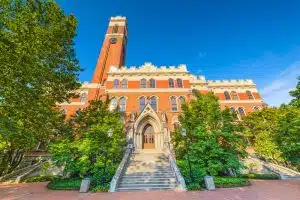The 10 Colleges with the Most Diverse Campuses
Now more than ever, colleges are concerned with making sure their student bodies demonstrate a high level of diversity. This is important for several reasons. First, it means that a greater share of minority students are pursuing higher education, but it also means that students get to experience a more diverse community while in college.
For quite some time now, schools have been aware that students learn more about the world around them if they have the opportunity to interact with people who are different from themselves. They get a better understanding of different cultures and ways of thinking; different perspectives on how the world works, and a greater connection with people who come from different backgrounds.
So, when we talk about diverse colleges, we need to define what diversity really means, and how it works on a college campus. For example, a college with a predominantly black student body is not considered any more diverse than a college with a predominantly white student body. The key to campus diversity is having many different groups represented on the same campus. In order to measure diversity, many schools use a metric known as a diversity index, which calculates the relative diversity of any college campus. The index goes from 0 to 1, and the closer the school’s score is to 1, the more diverse they are.
In this post, we’re going to look at the most diverse colleges in the U.S. and talk about what makes each of them unique.
10. Georgia State University
Located in Atlanta, Georgia, GSU has a diversity index score of 0.73, making them one of the most diverse colleges in the country. They also have a student body of nearly 29,000 students. The predominant minority at GSU is African-American, and this group makes up 41% of the student body. GSU is also ranked #2 in most innovative schools, and their most popular majors are biological and biomedical sciences, business, management, and computer science.
Another interesting fact about Georgia State University is the predominance of female students on campus. While many schools have nearly equal numbers of men and women, GSU boasts a student body that is 60% female.
Unlike many schools, GSU students are more likely to live off-campus, with only 18% of students living in college-owned housing. GSU also promotes diversity by offering financial aid to 75% of its students with an average award of $5,667 per student. Because GSU is a state school, their in-state tuition is less than half of the out of state tuition. As a result, the vast majority of GSU students come from Georgia.
9. Johns Hopkins University
Currently, Johns Hopkins is ranked at #9 on the list of national colleges. They also rank in our top ten most diverse campuses with a diversity index score of 0.73. At Johns Hopkins, the largest minority group is Asian-Americans, but they also score well in all eight diversity markers. The Asian-American population at Johns Hopkins is 26%, but they also have significant representation of other minority groups.
Located in Baltimore, Maryland, Johns Hopkins is one of the more competitive schools in the country with an 8% acceptance rate and an average SAT range of 1510 to 1570 for admitted students. With a student-teacher ratio of just 6:1, Johns Hopkins students can count on a great deal of individual attention from professors, which is important because Johns Hopkins is considered one of the country’s leading scientific and medical research institutions.
In terms of gender distribution, Johns Hopkins has 45% male and 55% female students, for a total enrollment of 32,049 students in both undergraduate and graduate programs. They also have a very generous financial aid program that offers 54% of students some type of aid, and nearly all students receiving 100% of their needed aid.
8. Massachusetts Institute of Technology
Elite schools like MIT were once reserved almost entirely for white students, but thankfully this has changed dramatically over the last 50 years. Currently, MIT has a diversity index score of 0.73, and their largest minority group is Asian-American, making up 30% of the student body.
Ranked #2 is national colleges, MIT is one of the world’s leading research institutions with an annual expenditure of over $700 million for research. Much of this funding comes from the U.S. Government for projects that will eventually be used by the government in a variety of ways. It should come as no surprise that popular majors at MIT include aerospace, aeronautical, and astronautical engineering.
While the MIT student body was once very heavily male, times have changed and men only outnumber women by 4%, and this is expected to tighten even further in the coming years as more women enter STEM fields. Because of incredibly high tuition rates, MIT is committed to giving students 100% of their financial need, and this has help attract diverse students from all over the world.
7. Texas Women’s University
TWU ranks very high on our list of schools with the most diversity. With a diversity index score of 0.73, Texas Women’s is one of the more diverse schools in the country, and their largest minority group is Latinas. This group makes up 33% of the student body, but African-American and Caucasian women are also well represented.
But don’t let the name fool you. Texas Women’s University actually went co-ed in 1994, and their share of male students has been slowly growing since. Currently, women make up 87% of the student body, but that will likely change in the coming years. Their total student body is 16,238, and they take part in Division II sports.
Traditionally, Texas Women’s was known for majors related to health fields, but in recent years, more students are majoring in business, management, and liberal arts. With a student-teacher ratio of 17:1, don’t expect a tremendous amount of personal attention from professors until you reach higher level classes.
6. University of California Los Angeles (UCLA)
UCLA is the second most selective UC school (after UC Berkeley), and they typically only admit 11% of applicants. Additionally, it is one of the country’s most diverse schools with a diversity index score of 0.73. While UCLA has representation across a wide spectrum of different ethnicities, their largest minority group is Asian-American, closely followed by Latino.
The majority of UCLA’s students come from California, and this makes sense considering that the in-state tuition is $13,000 versus $44,800 for out of state students. But this doesn’t really hurt UCLA’s diversity standings because California is already an incredibly diverse state.
Located in Los Angeles’ Westwood neighborhood, UCLA sits on a beautiful 400-acre campus not far from the beach. They are currently ranked #20 in national universities, and they currently have a predominantly female student body with 60% female students.
5. University of Houston
Houston is one of the most diverse cities in the country, so it’s no surprise that they rank as one of the most diverse schools in the nation. With a diversity index score of .073, U of H has a Latino population of 36%, but most ethnicities are well represented. Houston is also known for having a high share of Indian and other South Asian citizens.
Currently, the University of Houston is considered fairly selective, with an acceptance rate of 66% and an average SAT range of 1140 to 1330. The gender distribution of students is nearly equally split at 49% male and 51% female, and their total enrollment is just over 47,000. Despite this, U of H still has a fairly low student-teacher ratio and many small classes, especially at the higher levels.
Financial aid is an important part of University of Houston mission, with over 60% of students receiving some type of financial aid. The most popular majors at University of Houston include business, marketing, psychology and engineering.
4. University of Texas—Arlington
You may have noticed a particular trend forming in our list of the 10 most diverse colleges. Many of them tend to be in states that also feature a great deal of diversity. States like Texas and California have always had diverse populations, and more and more minority students are attending college every year. The University of Texas at Arlington ranks #4 on our list, and their largest minority group is Latinos with 30% of the student body. In addition to Latinos, African-American students are constituting a larger portion of the student body than ever before.
With an acceptance rate of 93%, U of Texas isn’t the most selective school on our list, but that doesn’t mean they don’t have excellent academic programs. Their class sizes tend to be larger, but their business and marketing programs are very well regarded. U of Texas also boasts a very large population of female students with a gender distribution of 62% female and 38% male.
It is important to note that as we’ve seen rates of minorities improve across the board at U.S. colleges and universities, the share of female students is also sharply on the rise. With an enrollment of 33,000 students, U of Texas Arlington, provides 67% of full-time students with financial aid, and the average award is $8,200.
3. University of Hawaii—Manoa
Hawaii is another state that features a tremendously diverse population, so it should come as no surprise that the University of Hawaii at Manoa is one of the most diverse campuses in the nation. And besides, who wouldn’t want to go to school in Hawaii. With a diversity index score of .074, the University of Hawaii—Manoa’s largest minority population is Asian-American, which is not surprising considering that Hawaii’s population identifies strongly as Asian-American.
Because they receive a lot of applications every year, the University of Hawaii—Manoa is a fairly selective school with an acceptance rate of 70%. And like many of the colleges on this list, UH—Manoa has a largely female student body with 60% of its students identifying as female.
Another attractive feature of UH—Manoa is their financial aid program. For in-state students, the tuition is only $12,186, and half of full-time students receive financial aid. Their average aid package is $11,000, which covers most of tuition for in-state students.
2. Rutgers University
With a diversity index score of 0.75, Rutgers has one of the most diverse student bodies in the country. New Jersey is a diverse state that has a population that has high levels of African-American, Latino, and Asian/South Asian residents. So, it shouldn’t be surprising that one of the state’s largest universities is also quite diverse.
At Rutgers University, the largest minority group is Latinos at 29%. That may sound lower than some of the other schools we’ve featured, but keep in mind that Rutgers is a very large school, and other minority groups are also very well represented.
Rutgers is considered a fairly selective school with a 77% acceptance rate, but they also feature a fairly low student-teacher ratio at 13:1. This means that despite being a large school, they still have many classes with fewer than 20 students. Currently, Rutgers’ gender distribution is 55% female and 45% male.
1. Stanford University
We round out our list of the most diverse colleges with another school located in the super-diverse state of California. With a diversity index score of 0.75, Stanford has an incredibly diverse student body that is made up of Asian-Americans, Latinos, African-Americans, and Caucasians. The largest minority group is made up of Asian-Americans at 23%.
Stanford is currently ranked at #3 in national universities, which means they fall into the “most selective” admissions category. For the class entering in the Fall of 2021, the acceptance rate was just 4%, and accepted applicants had an average SAT range of 1470 to 1570.
Stanford is known for having a very low student-teacher ratio of just 5:1, meaning 68% of Stanford classes have fewer than 20 students. Currently, Stanford has a fairly evenly split student body with 51% female and 49% male.
So, there you have it. AdmissionSight’s list of the 10 schools with the most diverse campuses. If you’ve been wondering, what schools feature the most diversity, hopefully this post has helped. If you want to discuss your college plans with experts who specialize in tailoring a college admissions plan specifically for you, contact AdmissionSight today and schedule your free consultation.














































